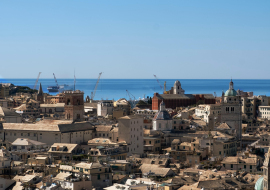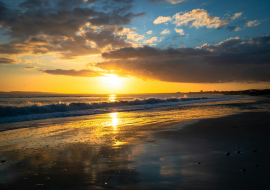
How is Ferragosto celebrated in Italy? History and traditions of the summer holiday

Ferragosto is one of the most significant holidays in Italy, whose roots go back to Ancient Rome. On August 15, those already on vacation can enjoy beach parties or participate in special events at sea. And those who are not yet on vacation can enjoy a well-deserved day of rest. But how exactly is Ferragosto celebrated in Italy? And what can you do to have fun with your friends and family?
Why is it called Ferragosto? Historical roots of the holiday
The term "Ferragosto" comes from the Latin "Feriae Augusti", which means "rest of Augustus". This pagan holiday was introduced by Emperor Augustus in 18 BC. as a period of rest and celebration after the completion of major agricultural work.
It was a real vacation period for the ancient Romans, when everything was suspended. There were performances, horse games and much more. During the Christian era, Ferragosto coincided with the religious feast of the Assumption of Mary, celebrated on August 15th.
Interesting facts about Ferragosto
Because it was a festival affecting the entire population and celebrated continuously since Roman times, Ferragosto became firmly entrenched in popular culture. Here are some interesting facts:
- The custom of going out into nature dates back to the fascist period, when associations organized trips for their members using special trains.
- Have you ever wondered why in Ferragosto it is customary to congratulate each other? This tradition also has ancient roots. During the era of the Papal State, workers congratulated their employers in exchange for tips.
- Since cinema became part of popular culture, many films have depicted Ferragosto in Italy, such as 1962's Sorpasso, Carlo Verdone's Un sacco bello and Nanni Moretti's Caro Diario.
- Ferragosto is celebrated not only in Italy. In Europe, it is also celebrated in Catholic countries such as France, Spain, Romania, Portugal, Greece and many others.
What to do in Ferragosto?
During this summer break there are various activities that can be done depending on the weather, time and local traditions. If you're not on vacation and looking for something to do for the day, you might consider the following options:
- Barbecue : It can be arranged both in the garden of the house and in parks where grilling is allowed. It's especially nice to have a barbecue near a lake or river.
- Hiking : This is a great idea for disconnecting from the hustle and bustle of the city, immersing yourself in nature and discovering picturesque landscapes. Both mountains and countryside or coastline are suitable.
- Fireworks : Many places have fireworks displays, especially where there is a strong Marian tradition or there are a lot of tourists.
- Bonfires on the beach : Some places have bonfires for communal fun, like in Valmalenco or other areas of Italy. In some cases, DIY fires may be prohibited.
Local events and holidays for the weekend in Ferragosto
Throughout Italy, Ferragosto is celebrated with a variety of local events and holidays, varying from North to South. Here are some significant events:
- Palio di Siena on August 16, in honor of the Assumption.
- Saracen tournament in Sarteano with costume performances, traditional food and music.
- Vara in Messina , a colorful festival that runs through the entire city.
- Cavalcata of Assunta in Fermo, an ancient horse procession through the streets of the city.
From Piedmont to Sicily, each region has its own characteristics: village fairs, open concerts, sports tournaments and religious processions.
What do they eat in Ferragosto?
Ferragosto is a time of celebration, uniting all of Italy at richly laid tables with traditional dishes and regional delicacies. Every corner of the country has its own typical dishes. Almost all of them are light, given the hot weather at this time of year.
In the north
In northern Italy, Ferragosto is often celebrated with dishes that vary from region to region. Besides the classic barbecue, bacon dumplings are likely to be eaten in Trentino or Val d'Aosta. In Lombardy they serve a cold version of the classic minestrone.
Coastal regions such as Veneto and Liguria offer fish dishes such as marinated sardines or capponata, which can even be eaten on the beach. In Friuli Venezia Giulia and Emilia Romagna they serve delicious stuffed pasta for lunch. Piedmont is famous for its typical Margaritines from Stresa.
In the center
In the center of Italy, the customs are slightly different, but the essence remains the same. In Tuscany, roasted pigeon is served, a tradition dating back to the Middle Ages. In Umbria they prefer gnocchi with duck sauce, and in Lazio, for example in Rome, chicken with pepper is a must, ideal for sandwiches.
On South
In the south of Italy, where many people go to the sea or to cooler places, the dishes are predominantly summer. In Campania, they always make a pasta omelette from the leftovers from the previous days.
In Puglia, the main dish is orecchiette with turnips, and in Calabria, stuffed pasta. In Sardinia they prepare culurgiones from potatoes, and in Basilicata they traditionally eat Lucanian lamb.
News

23/08/2024
Why are the fuses blown?

21/08/2024
Life in Castelletto

19/08/2024
How to Stop a Cat from Running Away

09/08/2024
6 Most Beautiful Beaches in Genoa

08/08/2024
How is Ferragosto celebrated in Italy?

05/08/2024